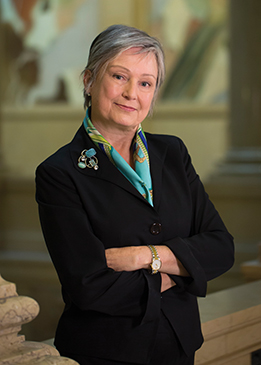 Spring 2015
Spring 2015|
"The history of Pittsburgh’s efforts to protect its rivers and make them a civic centerpiece is a case study in collaboration. Carnegie Museums has been proud to contribute to this collaboration."
|
This issue’s cover story shows how Carnegie Science Center is addressing what is sometimes called “riverine science.” The new H2Oh! exhibit explores various scientific issues that inform our understanding of and management of these precious natural resources. When I think about Pittsburgh and her rivers, I think of two concepts that are central not only to the work of Carnegie Science Center but also to our whole family of museums: interdisciplinarity and collaboration. Like any complex phenomenon, a river can only be fully considered in an interdisciplinary context. This is true within the sciences—studies of our waterways involve chemistry, hydrology, geology, and other scientific disciplines—and more generally—history, public policy, economics, urban planning, cultural studies, literature, and the arts also play a role in understanding rivers and their role in our lives. Conversations between specialists in all of these disciplines will ultimately best inform our thinking about rivers, or any other complex and important matter. As for collaboration, the history of Pittsburgh’s efforts to protect its rivers and make them a civic centerpiece is a case study in collaboration. Public authorities, private landowners, commercial and non-profit organizations have all collaborated to plan for the well-being of these precious natural resources and the development of our riverfronts. Carnegie Museums has been proud to contribute to this collaboration through the ongoing development of the Science Center’s prime location along the Ohio River and the creation of important learning tools such as H2Oh!. If you visit this spring, in addition to this new first-floor exhibit, you’ll notice a number of improvements to the landscaping and the view from the Science Center’s River View Café. All of these enhancements strengthen the connection between the Science Center, its riverfront, and the community. As a family of museums in the arts and sciences dedicated to informing public discourse on all kinds of issues of community importance, Carnegie Museums knows that interdisciplinarity and collaboration are more than concepts—they are the keys to our effectiveness. The story you will read about river science at the Science Center is just one example!
Jo Ellen Parker
|
Three Rivers Wise · Call of the Wild · Uncrated: The Hidden Lives of Artworks · I Can Do That · NewsWorthy · Face Time: Stefan Hoffmann · Artistic License: A Wonderful (Still) Life · First Person: Objects of Remembering · Science & Nature: Nights at the Museum · Travel Log · The Big Picture
 |
Copyright © 2017 CARNEGIE Magazine. All rights reserved. |


